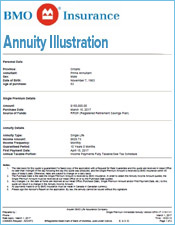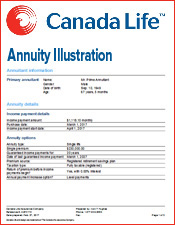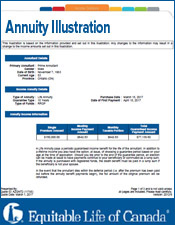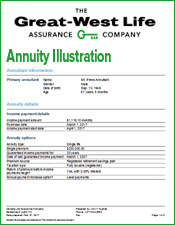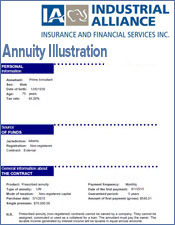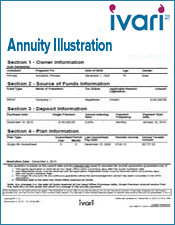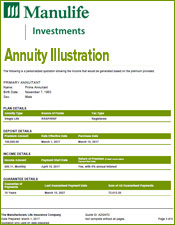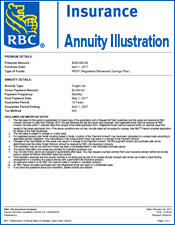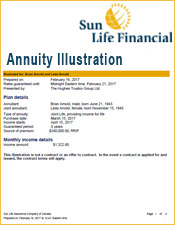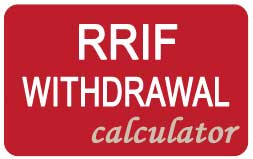What Is A Mutual Fund?

Mutual Funds
Despite the lockdown and the global pandemic, Canadians are still investing in mutual funds. According to the Investment Funds Institute of Canada (IFIC) 2020 Investment Funds Report assets under management grew by more than $2 billion last year.
Canada currently has 112 companies that offer 3,459 various mutual funds. Obviously, this adds complexity to the prospect of investing in mutual funds, but not all mutual funds will suit your investment needs.
What is a Mutual Fund?
A mutual fund is a pool of money used to invest in an asset class, or a mix of asset classes. Asset classes are similar financial securities such as equities (stocks), fixed income (bonds), and or money market instruments. Money market instruments include various short-term, low-cost financial securities such as government bonds, treasury bills, notes, and other products.
Mutual funds that combine two or more securities from different asset classes within their portfolio are called balanced funds. According to IFIC, 49 percent of Canadian mutual funds were held in balanced mutual funds in 2020. Equity funds made up 33 percent and the balance was invested in money market instruments.
.Investors buy shares in a mutual fund directly from the fund or through a broker or financial advisor. They don’t own the underlying securities within the portfolio, but shares in the fund. Every mutual fund has its own mix of securities in its portfolio which carry varying risks, rewards, and benchmarks the fund strives to surpass.
The price of a mutual fund (net asset value, or NAV) fluctuates daily as the value and makeup of the securities within the portfolio can change, as can the number of investors.
Mutual funds may be actively managed with a manager or management team making decisions about the fund. Actively managed funds include higher fees.
Passively managed funds follow a market index such as the S&P 500 and do not have a manager or management team.
Research Your Investment Options
Mutual funds are one of the most common choices in RRSP, RRIF and TFSA and they can make sense if your employer matches your investment as this can help you maximize your tax benefits
.However, mutual funds may not be your best choice under other circumstances. Many don’t outperform the market and they can also involve fees that are higher than other investment choices. However, they do have advantages.
Unlike picking individuals stocks, a mutual fund may help you diversify your investment as they spread risk over numerous securities. However, mutual funds are financial products and companies are eager to sell them, no matter what securities they choose to buy for the mutual fund.
As well, the level of risk for each mutual fund depends on the securities within it and your returns are directly affected by fees. It is vital you do your homework before you invest. Just because they are easy to buy, it doesn’t mean you should.
Risk Tolerance
Every mutual fund has various securities within it and a certain risk level. Before you decide to invest in any product, you should consider your personal risk tolerance level.
Riskier mutual funds will tempt you with the potential for higher returns, while lower risk levels mean more security, but less chance of earning money. Investors should consider their age, investment goals, and tolerance for losses before they decide on a mutual fund.
As mentioned, balanced mutual funds are the most popular as they usually provide a mix of stocks and bonds. They can be a good choice if you’re investing for the long-term and you’re willing to take more risk.
However, retirees or those close to retirement may choose to preserve their capital instead. In this case, a conservative investment may be a better choice.
Buying Mutual Funds
With over one hundred mutual fund companies available to you, there’s no shortage of choices. Big firms make it extremely easy to buy, but you should do some research before you move forward.
Mutual funds are divided by industry sectors and you will need to consider where you want to invest. For instance, you could invest in large market capitalization companies in Canada. You might want to dabble in small cap companies in foreign markets, or perhaps emerging markets interest.
There’s a lot to learn about investing and if these terms are unknown to you, you will need more information.
Comparing Similar Mutual Funds
Once you’ve narrowed down your choices, you will need to compare similar mutual funds. As an example, you might want to invest in large cap companies in Canada, only to discover there are nine similar mutual funds.
The mutual fund rating agency, Morningstar, may help you narrow your choices. They provide unbiased assessments and rate funds by stars, with five being a top choice. Choose the best and eliminate the rest.
Top Mutual Funds in Canada
If you’re looking for a definitive answer regarding which mutual funds are most popular or profitable, you’ll quickly become very confused. Some investment websites rate mutual funds based on the Assets Under Management (AUM) which is the amount of money within the fund. Others promote particular products to earn commissions. Still others rank mutual funds based on their Year-To-Date Return (YTD).
However, don’t be swayed by past performance as this is not a guarantee of future returns. The performance of a mutual fund and mutual fund fees can change. Factors like fees, the fund’s process, and the portfolio manager (if it has one) are always considerations.
Nonetheless, for the sake of comparison we’ve included some of the most popular mutual funds based on AUM as of February 2021 by the Globe and Mail and those reporting the highest returns in 2020 according to morningstar.
Based on Assets Under Management (AUM)
| Name | AUM |
|---|---|
| GWL Aggress Por (Psg) 75/75 (Ps1) - FE | 133,028 M |
| RBC Select Balanced Portfolio Series A U$ - NL | 31,175 M |
| RBC Select Balanced Portfolio Series A - NL | 31,175 M |
| RBC Select Conservative Portfolio Series A - NL | 26,367 M |
| RBC Select Conservative Portfolio Series A U$ | 26,367 M |
| RBC Bond Fund Series O - NL | 19,464 M |
| RBC Bond Fund Series O - NL 7.2559 | 19,464 M |
| TD Canadian Bond Fund - Advisor Series - Lsc2 | 15,588 M |
| TD Canadian Bond Fund - Investor Series - NL | 15,588 M |
| TD Canadian Bond Fund - Premium Series - NL | 15,588 M |
* Data courtesy of the Globe and Mail
Based on YTD Returns
| Name | YTD Return (%) |
|---|---|
| Marquest Explorer F | 94.62 |
| Dynamic Power Global Navigator Cl F | 89.24 |
| Fidelity Global Innovators F | 86.63 |
| Dynamic Power Global Growth Class Sr F | 86.02 |
| Evolve Automobile Innovation Index Cl F | 83.97 |
| Desjardins SocieTerra Positive Change F | 78.94 |
| Purpose Canadian Equity Growth Sr F | 75.85 |
| Signature Global Technology Corp Cl F | 71.62 |
| Desjardins Overseas Equity Growth F | 69.37 |
| TD Science & Technology F | 65.84 |
* Data courtesy of Morningstar
Investors should note that they may benefit if they decide to by multiple mutual funds from one company or a family of funds. Perks may include lower management fees if your investments reach a certain dollar amount and possibly no-fee trading.
Understanding Mutual Fund Series
If you look at the list above, you’ll notice a letter after some of the mutual fund names. This letter refers to the class or series that the mutual fund is within. Each has its own benefits and cost structure.
- A series – sold to the investor by a financial advisor who may receive a commission, or purchased directly from the fund by an investor. These funds usually have a lower minimum investment.
- D series – sold to self-directed investors through a brokerage, without advice. These funds typically have lower fees.
- F series – mutual funds with the fees removed as they are purchased through a financial advisor. The financial advisor charges between 1 and 2 percent in fees to the investor directly.
- I series – investor or income series mutual funds target high net-worth investors.
- O series – mutual funds sold to institutional investors such as pension funds or insurance companies.
- T series – a portion of the returns of the mutual fund are tax-advantaged.
- Dividend payments come from income earned over the year within the mutual fund’s portfolio. Most of this income is distributed amongst investors by cheque or the investor can reinvest the amount in more shares.
- When the fund sells a security that has increased in value it may create a capital gain. Funds generally distribute capital gains annually to their investors.
- When a mutual fund increases in net asset value (NAV) the shares increase in price. If an investor decides to sell, their shares are worth more.
- High management fees that eat into your returns
- Some mutual funds include loads which are essentially sales commissions
- Financial advice comes at a cost and is not typically provided when you buy
- Priced once a day
- Most actively managed mutual funds fail to outperform benchmarks
- Flexible investments that react quickly to market conditions
- Offers portfolio diversification as each fund holds many securities
- Can be bought and sold once each trading day
- Less diversification in some sectors and foreign stocks
- Potential to make rash trades due to frequent price changes
- Higher cost than buying specific stocks as stock do not have management fees
- Usually lower yields for dividend paying ETFs than stocks, unless investor assumes more risk
- Leveraged ETFs can amplify losses quickly and substantially
- Portfolio diversification as each ETF can expose the investor to a large group of equities, investment styles, or market segments
- Offers many features similar to stocks such as liquidity, updated prices throughout the day, margin and short sales, and futures and options trading to manage risk
- Lower expense ratios
- Dividends usually reinvested immediately
- More tax efficient and realize fewer capital gains
- We supply you with the best mutual fundss and other eligible investments in Canada as our brokers represent all the best financial institutions in Canada. For personal assistance on your mutual funds please use our Mutual Fund Form.
Mutual Fund Types
If your head isn’t already spinning, mutual funds are further divided into closed-end, open end, and load and no-load funds. Closed-end funds – A set number of shares are issued to the public through an initial public offering (IPO). Unlike most mutual funds, the number of shares remains constant. As a result, shares of closed-end funds normally trade at a price lower than the fund's net asset value per share (discount).
Open-end funds – These are the most common type of mutual funds. They do not have a set number of shares as the fund will continually issue shares when people want to buy and redeem shares when investors decide to sell.
Load /No-Load – A loaded mutual fund charges a sales commission when the investor buys. No-load funds do not include a sales commission and consequently produce higher returns.
How Can You Earn Money From a Mutual Fund?
Mutual funds can earn money in three ways: dividend payments, capital gains, or increased net asset value.
Investment Fees Affect Your Bottom Line
According to a survey recently conducted by the online brokerage Questrade, 87 percent of Canadian investors don’t understand how much a one percent difference in mutual fund fees can affect their portfolio over 20 years or more.
Most believed 2 percent was high (51 percent), but a further 38 percent did not know. A stunning 47 percent had no idea what they were paying.
Mutual fund companies and online trading platforms make money through fees that erode your returns. Let’s take a look at what fees you could pay and how they could potentially affect your bottom line.
Trading Fees
If you decide on self-directed investing through an online platform, you could pay a trading fee when you buy a mutual fund. If so, the amount is usually based on the amount you invest, but $50 is common.
Clearly, this would eat into your money considerably if you are just investing $500. However, even when you invest $10,000 that fee still amounts to 0.5 percent of your investment.
Luckily, some platforms do offer no trading fee (NTF) funds. Regrettably, these aren’t the only fees you could pay. Here are a few more commonly charged to investors.
Management Expense Ratio (MER)
There’s no getting around this one. All mutual funds have an MER which is a fee charged as a percentage that reduces the net asset value (NAV) of the mutual fund to pay for the estimated expenses, taxes, and management fees for the year.
While an MER percentage may seem small such as 1 or 2 percent, this percentage reduces the value of the fund whether it makes money, or not. As a result, even a small percentage can reduce investment value considerably over the years.
For instance, an investment of $10,000 with a rate of return of 5 percent over 20 years with a MER of 1.5 percent would cost you $4,959.89 in management fees. Increase the MER to 2.0 percent and that increases to $6,613.19.
However, that’s only a fraction of your losses as you also reduce your earnings. A 1.5 percent MER will reduce your earnings by $8,704.37 and a 2.0 percent MER by $12,163.86. Try on online MER fee calculator if you want to calculate the impact yourself.
Load
Load is another word for a sales commission. Some trading platforms do not charge investors trading fees when they buy mutual funds with loads, but in actuality they are just charging you in another way.
“Front-loaded” (Class A shares) mutual funds charge you when you buy the fund. “Back-loaded” (Class B shares) mutual funds charge you when sell. Class C share mutual funds usually spread the fee across a year.
So how do you know what fees you are paying or will pay? Mutual fund fees are listed in the funds "fact sheet". Read through all documentation carefully. Some mutual funds also include an ongoing service or marketing fee or short-term trading fee if you sell early from a registered investment.
Do Mutual Fund Management Fees Offer Value?
Some people believe it is worthwhile to pay a mutual fund management fee for an actively managed fund, because they’re tapping into expertise which could increase their returns. However, statistics don’t support this.
SPIVA Canada, a subdivision of S&P Global, issues scorecards comparing actively managed mutual funds against S&P Index performance. They found 88 percent of Canadian equity funds underperformed their benchmarks in 2020. Performance was even worse over the past decade at 90 percent.
Disadvantages of Mutual Funds
Here is a recap of the most notable disadvantages of mutual funds:
Advantages of Mutual Funds
Here is a recap of the most notable advantages of mutual funds:
Exchange-traded funds (ETFs)
Mutual funds have dominated the personal investment realm for years. However, according to IFIC, exchange-traded fund sales have surpassed mutual fund investments in recent years. Equity ETFs increased five-fold in 2020.
So what is an ETF and why it is so popular? It has similarities to a mutual fund, but also important differences.
Like a mutual fund, an ETF allows an investor to buy a group of securities which offers portfolio diversification. It also allows an investor to concentrate their investments in a particular area of the market. However, ETFs usually involve much lower fees. MERs are normally between 0.05% and 0.25%.
ETFs can also be bought and sold throughout the trading day. Prices fluctuate much like individual stocks. However, most ETFs aren’t actively managed. Instead, each ETF follows an index to measure their performance. They may offer more modest returns too.
Some banks are licensed by the Mutual Funds Dealers Association and can’t sell ETFs. Others have an Investment Industry Regulatory Industry of Canada accreditation and can sell ETFs, but they are more prone to sell in-house financial products such as mutual funds instead.
While investors may be quick to assume that passive ETF investment is the best way to go, there can also be good reasons to divide assets between passive and active choices.
Active investing can be beneficial during market upheavals, when investors can’t spend time managing their portfolio, or when they need to exit an investment or manage taxes.
Disadvantages of ETFs
Here is a recap of the most notable disadvantages of exchange-traded funds:
Advantages of ETFs
Here is a recap of the most notable advantages of exchange-traded funds:
Choosing an Investment Provider
Choosing a provider is an important as your mutual fund choices. Each offers various levels of service and associated costs. Here are the most common and what they have to offer.
Proprietary Funds
Proprietary funds are sold directly to investors through a company. Big names include BlackRock, Vanguard, and Fidelity, amongst others. They want you to buy their products and usually charge a fee if you want to buy products from outside their organization.
Robo-Adviser
A robo-adviser uses artificial intelligence to help people invest their money. Buying may involve little or moderate human intervention. The purported benefits are easy asset allocation within your risk level, automated portfolio rebalancing, tax loss harvesting to reduce your taxes if you have investment losses, as well as a plethora of educational tools. They often involve low or no account minimums and low fees, but they are also a new investment option.
Unfortunately most people don’t understand the concept, including millennials that have grown up in the digital age. According to a CFA Institute report, more than a third of millennials have never heard of it and only 3 percent have ever used it.
Online Brokerage
The same report found that young investors are moving towards online investing. Those under 35 years of age were twice as likely as others to invest online, because the online experience is already a part of their lifestyle.
Mature investors are also turning to self-directed investing, because these platforms usually offer lower trading costs and fees and online tools. Investors can also trade almost immediately and buy whatever they want without bias. Plus, they can opt for real-time investment monitoring, at a cost.
However, online brokerages also have disadvantages. Their ease of use can lead to poor investment choices or overinvestment. They may not understand tools such as limit orders that can control their spend either, or they may assume more risk than they should considering their financial position.
Investment Advisor
A financial advisor is a personal financial professional who can educate investors and customize investments to the client’s needs and risk tolerance level.
Even though they do charge a fee, they also have a fiduciary duty to protect investor interests. As a result, they recommend the best possible financial products and not just products to earn a commission.
Managing Your Portfolio
When you buy investments they should suit your risk tolerance level, investment time horizon, and return expectations. This includes determining a formula of how much you want to invest in each asset category.
For instance, a conservative portfolio might include a high percentage of fixed income securities, a lower percentage of equities, and a small percentage of cash or cash equivalents. An aggressive portfolio might focus on equities, with far less in fixed income securities.
Whichever portfolio you choose, you will need to manage it as the market changes. Inevitably, some investments will do better than others, which can throw your asset allocation out of kilter. Financial professionals recommend rebalancing your portfolio annually to maintain the right mix of investments and to minimize taxes.
If all this seems overwhelming, it needn’t be. Hughes Trust Co Group Ltd. offers expert advice and access to a broad range of wealth management services and investment options, including mutual funds and ETFs. We can help you find the right asset allocation and keep your portfolio balanced.
We are an innovative company that can simplify the process to help you reach your investment goals quicker than you could have imagined.




